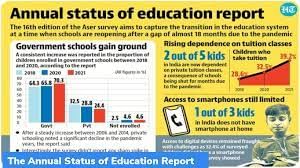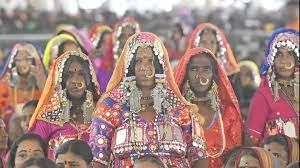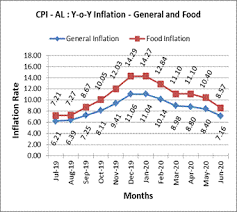UPSC Daily Current Affairs- 21st January 2023 | Current Affairs & Hindu Analysis: Daily, Weekly & Monthly PDF Download
GS-I
Banjaras and Hakku Patra
Context
Recently Prime Minister of India symbolically distributed Hakku Patra (land title deeds) to five families of the Banjara (Lambani) community, a nomadic Scheduled Caste group in Karnataka.
About Banjaras:
- The Banjaras are a key scheduled caste sub-group in Karnataka, although they are considered to be a tribal group in terms of the lives they lead.
- The Scheduled Castes and Scheduled Tribes together make up nearly 24 per cent of the state population.
- The Banjara are a historically nomadic trading caste who may have origins in the Mewar region of what is now Rajasthan.
- Fire dance, ‘Ghumar’ dance and Chari dance are the traditional dance forms of the Banjaras.
- Banjaras have a sister community of singers known as Dadhis or Gajugonia.
- They are traditionally travelled from village to village singing songs to the accompaniment of sarangi.
- The Banjara community has been listed as a Scheduled Tribe in the states of: Andhra Pradesh, Telangana and Odisha.
- They were designated as an Other Backward Class in: Chhattisgarh, Gujarat, Haryana, Madhya Pradesh, Maharashtra and Rajasthan.
- They were designated as a Scheduled Caste in: Karnataka, Delhi and Punjab.
About Hakku Patras or title deeds:
- A title deed is a property ownership document, and the bearer of the document owns the land.
- The title deeds enable owners to avail of bank loans with the said document.
- They will also be eligible to buy or sell land to which the title deed is granted by the government.
Source: Indian Express
What is ‘nikah halala’?

Context
The Supreme Court said recently that it will set up a five-judge Constitution Bench to hear pleas challenging the constitutional validity of polygamy and nikah halala practice among Muslims.
About Nikah halala:
- The term “Nikah” and “Halala” both are Arabic terms.
- “Nikah” means Marriage and “Halala” means to make something halal or permissible.
- The expression “Nikah Halala” literally means a marriage to make something halal or permissible.
- As per Muslim Law, a man cannot remarry his wife after he divorced her, unless the wife is married to another man and gets divorced from that man (second husband) or after the death of the second husband.
- Thus, the process of making the woman permissible for her first husband by giving her marriage to a third person with a pre-condition is known as Nikah Halala also known as Tahleel marriage.
- In this process, the third person consummates the marriage with the object to make the woman permissible for her first husband.
- Does the Quran permit this? There is no sanction in the holy Quran for such marriages.
- Legality of Nikah halala in India:
- The Muslim Women (Protection of Rights on Marriage) Act, 2019 passed after the invalidation of triple talaq by the Supreme Court, is silent on nikah halala.
- The Act made instant triple talaq a criminal offence but steered clear of halala which takes place as a consequence of triple talaq.
Source: Indian Express
National Museum of Natural History
Context
Regional Museum of Natural History (RMNH), Mysore, a regional branch of National Museum of Natural History (NMNH) under the Ministry of Environment, Forest and Climate Change organised awareness programmes on #SaveEnergy #LifestyleforEnvironment– Mission LiFE, Green talk and Green pledge.
About National Museum of Natural History:
- The National Museum of Natural History (NMNH) was a museum focusing on nature, located in New Delhi, India.
- Established in 1972 and opened in 1978, the museum functions under the Ministry of Environment and Forests.
- Exhibits at the NMNH were focused on India’s plants, animals and mineral wealth, and were divided into four main exhibit galleries:
- “Cell: The Basic Unit of Life”,
- “Conservation”,
- “Introduction to Natural History”, and
- “Nature’s Network: Ecology”.
Source: DownTo Earth
GS-II
Annual Status of Education Report (ASER)

Context
ASER, a nationwide citizen-led household survey that provides a snapshot of children’s schooling and learning in rural India has been released.
About ASER:
- The report is prepared by Pratham Education Foundation.
- The 2022 edition of the survey was done at a national level after 4 years due to the COVID-19 pandemic.
- This is an annual survey that aims to provide reliable annual estimates of children’s schooling status and basic learning levels for each state and rural district in India.
- ASER has been conducted every year since 2005 in almost all rural districts of India.
- ASER is the largest citizen-led survey in India.
- It is also the only annual source of information on children’s learning outcomes available in India today.
- Unlike most other large-scale learning assessments, ASER is a household-based rather than school-based survey.
- This design enables all children to be included – those who have never been to school or have dropped out, as well as those who are in government schools, private schools, religious schools or anywhere else.
Major highlights of the Information collected:
- Information on schooling status is collected for all children in the age group 3-16.
- Children in the age group 5-16 are tested in basic reading and basic arithmetic.
- Basic information is collected on school infrastructure, enrollment, attendance, teachers and fund flows.
- Since 2010, ASER has tracked selected Right to Education (RTE) indicators as well.
Key Highlights of the Report:
Enrollment:
- Enrollment in government schools have increased significantly since 2018.
- In 2018, the number stood at 65.6 per cent.
- The period 2006 to 2014 saw a steady decrease in the proportion of children (aged 6 to 14) enrolled in government school.
- The proportion of children (age 6 to 14) enrolled in government school increased sharply from 65.6% in 2018 to 72.9% in 2022.
- Overall, in the age group of 6-14 years, the enrollment rate now stands at 98.4%, an increase from 97.2% in 2018.
Enrolment of girls
- The number of girls in the age group 11-14 years who do not go to schools has also decreased – 2% in 2022 compared to 4 % in 2018.
- This figure is around 4% only in Uttar Pradesh and is lower in all other states.
- The decrease in the proportion of girls not enrolled in school is even sharper among older girls in the 15-16 age group.
- In 2018, this figure stood at 13.5%.
- The proportion of 15-16-year-old girls not enrolled has continued to drop, standing at 7.9% in 2022.
- In only three states, the number of girls not going to school is above 10% – Madhya Pradesh (17%), Uttar Pradesh (15%), and Chhattisgarh (11.2%).
Decrease in reading and arithmetic skills
- Nationally, children’s basic reading ability has dropped to pre-2012 levels, reversing the slow improvement achieved in the intervening years.
- Drops are visible in both government and private schools in most states, and for both boys and girls.
- In both government and private schools, only 20.5% students of Class 3 can read, compared to 27.3% in 2018.
- Similarly, the proportion of Class 5 students who can read has dropped to 42.8% in 2022, compared to 50.5% in 2018.
- This decrease is smaller in the case of Class 8 students – 6% in 2022 compared to 73% in 2018.
- Children’s basic arithmetic levels have also declined compared to 2018.
- The proportion at the national level now stands at 25.9% compared to 28.2% in 2018 in the case of Class 3 students; 25.6% compared to 27.9% in the case of Class 5 students.
Private tuition:
- The number of students taking private tuition classes has increased.
- As per the ASER 2022 report, the percentage of Class 1-8 students taking tuition classes is at 30.5% in 2022, compared to 26.4% in 2018.
School facilities:
- The fraction of schools with useable girls’ toilets increased from 66.4% in 2018 to 68.4% in 2022.
- The proportion of schools with drinking water available increased from 74.8% to 76%, and the proportion of schools with books other than textbooks being used by students increased from 36.9% to 44% over the same period.
- Most sports-related indicators also remain close to the levels observed in 2018.
- In 2022, 68.9% of schools have a playground, up slightly from 66.5% in 2018.
Source: The Hindu
All-India Consumer Price Index
Context
The All-India Consumer Price Index Number for Agricultural Labourers (Base: 1986-87=100) for the month of December, 2022 remained stationary at 1167 (One thousand one hundred and sixty seven) points and for Rural Labourers increased by 1 point to stand at 1179 (One thousand one hundred and seventy nine) points.
- Max increase for Agricultural Labourers: Rajasthan
- Max increase for Rural Labourers: Kerala
About CPI:
- It is a comprehensive measure Consumer Price Index or CPI as it is commonly called is an index measuring retail inflation in the economy by collecting the change in prices of most common goods and services used by consumers.
- Called market basket, CPI is calculated for a fixed list of items including food, housing, apparel, transportation, electronics, medical care, education, etc.
- Remember, CPI is different from WPI, or Wholesale Price Index, which measures inflation at the wholesale level.
- In India, there are four CPI numbers:
- CPI for Industrial Workers (IW)
- CPI for Agricultural Labourers (AL)
- CPI for Rural Labourers (RL) and
- CPI for Urban Non-Manual Employees (UNME).
- While the Ministry of Statistics and Program Implementation collects CPI (UNME) data and compiles it, the remaining three are collected by the Labour Bureau in the Ministry of Labour.
Uses:
- To calculate the inflation levels CPI’s annual percentage change is also used to assess inflation.
- To compute the cost of living
- the purchasing power of a country’s currency
- Understanding the real value of wages, salaries and pensions,
- Price regulation
- Provides insights to consumer spending capacity
The calculation
- The CPI is calculated with reference to a base year, which is used as a benchmark.
- The price change pertains to that year.
- CPI = (Cost of basket divided by Cost of basket in the base year) multiplied by 100
- Base years
- CPI(IW) = 1982
- CPI(AL) = 1986-87
- CPI(RL) = 1984-85
Source: PIB
GS-III
Alien species in Tiger Reserves

Context
Several alien invasive plants growing together can have a detrimental effect to the biodiversities in tiger habitats, a new study has found.
- The research paper has deciphered many negative impacts of multiple co-occurring alien plants on biodiversity and what it means for conservation in the era of global changes. The study is the first of its kind in India and was published in journal Forest Ecology and Management by the Wildlife Institute of India (WII).
- Invasive species:
- Invasive alien species are plants, animals, pathogens and other organisms that are non-native to an ecosystem, and which may cause economic or environmental harm or adversely affect human health.
- Regenerate at an alarming speed and threaten to edge out the indigenous flora
- Some of the invasive plants have a toxic impact on the landscape after remaining underwater, which is often for two months every monsoon.
- Some weeds have herbal properties, but their toxicity outweighs their utility. For instance, wild boars love to gorge on the succulent rootlets of the Leea macrophylla or ‘kukura thengia’ that is fast clogging the patrolling paths and grasslands.
Why is it an issue?
- Impact of Alien Plants unknown: India’s biodiverse ecosystems are threatened by a variety of alien plants like Lantana camara, Parthenium hysterophorous, Prosopis juliflora, etc, introduced during British colonisation. Lantana alone has pervasively invaded 44 per cent of India’s forests.
- Apart from its spread in different ecosystems and occasional reports on its association with birds, little is known about how invasive plants affect an ecosystem in the long term.
- There is even greater confusion when one asks about how alien plants impact native ecosystems.
- Due to the absence of reliable scientific data and mixed opinions on the impact of alien species, there exists a dilemma regarding the need to manage them.
- In the face of rapid, pervasive invasions, this inaction could threaten ecosystems’ sustenance.
- The plants can put pressure on native forage plants and drive away wild herbivores — the food source for the big cats.
- Native wild herbivores like chital and sambhar did not prefer the commonly found plants in invaded areas. They preferred rare forage plants, which were already depleted in infested areas.
- Although wild herbivores consumed a limited portion of alien plants. With monotonous invasion stands, their dependence on native forage increases.
- Invasions might slowly deplete the native plant populations and might lead to diseases in the herbivores
- Reduced forage availability for herbivores like sambar and chital, which are major prey for tiger, leopard, and dhole in this landscape, threaten the sustenance of these carnivores in invaded regions.
- The future of these tiger ecosystems can thus be grim. It is indicative of an ‘invasion-centric forest ecosystem’ historically unmatched, defaunated and functionally downgraded with homogenised biodiversity
Conclusion:
- It is necessary to prioritise restoration investments in the least invaded regions to retain native biodiversity and slowly upscale such restored habitats.
- The study highlighted the importance of investments in scientific restoration in India to mitigate the impacts of biological invasions.
Kanha Tiger Reserve
- Also known as Kanha–Kisli National Park, is one of the tiger reserves of India and the largest national park of the state of Madhya Pradesh.
- Hosts populations of Bengal tiger, Indian leopard, dhole, sloth bear, Bengal fox and Indian jackal. The barasingha is adapted to swampy areas. The gaur inhabits meadows and waterholes in the park. Blackbuck has become very rare.
- The first tiger reserve in India to officially introduce a mascot, Bhoorsingh the Barasingha.
- The area is the ancestral home of the Gond and Baiga tribes.
Source: Down to Earth
Hybrid Immunity

Context
Hybrid Immunity provides better protection against severe Covid-19, while all immunity against re-infection wanes within a few months.
- This was revealed by a recent study in the journal The Lancet Infectious Diseases.
- Hybrid immunity is gained from a previous infection plus vaccines – either the primary doses or both primary and booster doses.
- As per the recent study, a hybrid immunity offers a higher magnitude and durability of protection as compared to infection alone.
- Getting a natural infection – best after vaccination so that the risk of death is lower – provides better protection than vaccines alone.
- This is because it prepares the body against the entire virus, rather than say just the spike protein.
- Protection against severe disease and hospitalisations from a Sars-CoV-2 infection alone was found to be 82.5% at three months after the last shot or infection.
- In comparison, hybrid immunity with just the primary vaccine doses was found to be 96% at three months and 97.4% at 12 months.
- The effectiveness of hybrid immunity gained from infection coupled with the primary as well as a booster dose stood at 97.2% at three months.
- Natural immunity (obtained after being infected) comes when the body produces antibodies to protect against a germ or virus.
- According to WHO, risk of reinfection is relatively low for the six months following infection and then begins to wane over time.
- Vaccines also introduce antibodies to the body, which helps the immune system learn to produce specific antibodies to fight against Covid.
- So, when these two immunities are paired together, they provide greater immunity than if they were apart.
- Guidance on the number and timing of SARS-CoV-2 vaccinations
- These results provide information that can be used to tailor guidance on the number and timing of SARS-CoV-2 vaccinations.
- In regions with high Sars-CoV-2 sero-prevalence, the primary vaccination can offer high protection against severe disease and hospitalisation for at least one year.
- These results provide information that can be used to tailor guidance on the number and timing of SARS-CoV-2 vaccinations.
- Indians are relatively safer against severe impacts.
- This is because nearly 70% of population have been infected at least once with the virus and 95% of the adults have received at least two doses of vaccination.
- India did not see a surge as was reported in other countries like China and Japan
- The finding boosts the theory that the high hybrid immunity level is the reason India did not see any surge when it was being reported in other countries like China and Japan.
Source: The Hindu
|
38 videos|5293 docs|1118 tests
|
FAQs on UPSC Daily Current Affairs- 21st January 2023 - Current Affairs & Hindu Analysis: Daily, Weekly & Monthly
| 1. What is the GS-I exam? |  |
| 2. What are the topics covered in GS-II? |  |
| 3. How can I prepare for GS-III? |  |
| 4. What is the importance of daily current affairs for UPSC exams? |  |
| 5. How can I find frequently asked questions (FAQs) related to UPSC exams? |  |



















